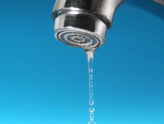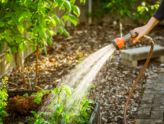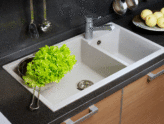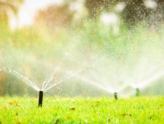Top 5 Tips for Maintaining Your Water Heater in Cold Weather
Cold weather and freezing temperatures can bring devastating consequences to your water heater. With the additional strain and plumbing damage cold weather brings to water heaters, it’s crucial to take the correct maintenance steps. You should never ignore the potential damage cold weather can bring!
There are several ways to minimize such damage and ensure your water heater stays in top shape. How can you ensure your system continues performing at its best?
Maintaining a water supply system doesn’t need to be a challenge. Read on as we explore how freezing temperatures can affect your water supply and gather the top five tips for maintaining your water heater in cold weather.
How Does Winter Weather Affect Water Heaters?
Winter weather does more than put a strain on your water heater and cause frustrations for you. It can also lead to more severe and costly damage. Here are some of the ways winter weather affects water heaters and examples of the damage freezing weather can cause:
● Potential for leaks – as the water heater metal expands and contracts under the strain of cold temperatures, it can sustain damage. This damage could eventually cause leaks from the bottom of the tank, especially with older water heaters or units in unheated areas.
● Cooler pipes – pipes leading from your water heater tank to your home can become colder due to freezing weather. With colder pipes, the water delivered to the water heater may be colder, meaning you may need to face higher energy bills to heat the water.
● Sediment buildup – sediment is a naturally occurring mineral that can accumulate in your water heater over time. Although sediment buildup can happen throughout the year, it can have a more significant impact during winter. The buildup causes the water temperature to reduce by extracting heat from the heater. This process can affect the energy efficiency of your gas water heater.
Being on the lookout for these issues and completing water heater maintenance minimizes the chances of costly repairs. Considering these factors, now is the time to prepare to ensure your water heater will last despite the cold weather.
5 Tips to Maintain Your Water Heater in Freezing Temperatures
Damage to a water heater is never good news, especially when you want to take a nice warm bath during the winter months. Here are the five tips to maintain your water heater in freezing temperatures to keep it running optimally.
1. Flush the Tank
You should never forget to flush your water heater tank at least once a year. Flushing the tank eliminates sediment buildup, ensuring the water heater lasts longer and runs efficiently. The flushing process can improve heating speed and ensure the sediment does not reduce the amount of hot water you can draw. Ensure you check the manual for your water heater to complete this step efficiently. It should outline which actions you need to take, including switching off the heater and cold water supply, connecting the drain valve to the hose, switching on a hot water faucet, and opening the drain valve.
2. Check the Pressure Relief Valve
A pressure relief or T&P valve automatically releases water when the pressure inside the tank increases. Pressure can increase when the freezing temperatures cause the tank to contract. You mustn’t neglect the pressure relief valve if you aim to eliminate damage to the water heater system. If your temperature and pressure valve malfunctions and the pressure is high, this can wreak havoc on the internal pressure of your tank. If you test the T&P valve, you can ensure that over-pressurization does not occur. It’s best to check the valve to confirm it works properly and replace the valve if you notice that it is malfunctioning.
3. Adjust the Temperature
When you set the temperature of the water heater, it’s best to stick to between 120 degrees and 140 degrees. You’ll likely know that a low temperature can help you save on energy costs; however, ensure the temperature is not lower than 120 degrees. If it is lower than this temperature, bacteria can grow. If you adjust the water heater’s temperature, you can balance energy efficiency and costs and ensure the water heater is not straining or overworking during winter.
4. Check the Anode Rod
Your anode rod can attract elements from the water that cause corrosion. Its primary purpose is to protect your tank. You can easily prevent corrosion by checking the anode rod at least once a year. This maintenance ensures the anode rod functions as expected, ensuring you get the best benefit from this part. Your water heater would benefit from no or low corrosive elements and function longer throughout winter. It’s best to try to replace the rod every three to five years to maintain the water heater’s performance.
5. Upgrade Water Heater Insulation
You mustn’t forget that freezing weather can lead to water heater damage. It’s essential to upgrade water tank insulation to ease the strain cold weather causes and reduce the potential tank contraction freezing temperatures cause. You can easily find water heater blankets at hardware stores that can insulate the tank. You could also insulate the cold water pipes to maintain energy efficiency. These steps can minimize heat loss during winter months, which is especially important in cold weather.
Select Caldwell Plumbing for Top Water Tank and Heater Services
Before the temperatures begin to plummet and the cold weather gets underway, you should consider the steps mentioned in this article to preserve your water heater and tank. You don’t need the added costs of high energy bills when maintenance can easily prevent this! If you require hot water tank services, you can fully rely on our professional, approachable plumbers at Caldwell Plumbing. Contact our plumbing experts to ensure your water heater system is winter-ready.

















